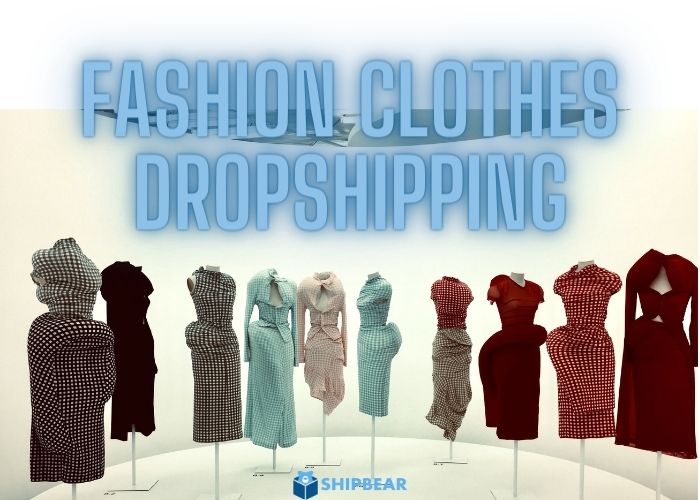E-commerce’s astronomical rise has revolutionized retail, allowing budding entrepreneurs to dip their toes in the fashion market without high overhead costs.
One of the most accessible approaches to launch your fashion business is clothes dropshipping, a method that eliminates the need for warehousing and upfront inventory costs.
But behind this seemingly straightforward strategy lies a complex web of sourcing, branding, and customer management.
Whether you’re a seasoned e-commerce owner or are starting from scratch, understanding the intricacies of clothes dropshipping is key to thriving in the bustling online fashion marketplace.
The Modern Phenomenon of Dropshipping in Fashion
Today’s fashion industry is a cauldron of creativity and consumerism, constantly churning out new trends at an unprecedented pace. Dropshipping capitalizes on this dynamism by enabling businesses to sell directly to consumers without stocking the products physically.
Instead, when a store sells a product, it purchases the item from a third party and has it shipped directly to the customer.
This method is particularly popular in the fast-moving fashion niche, as it allows entrepreneurs to keep their online stores fresh with the latest trends and designs.
Entrepreneurs are drawn to dropshipping for several reasons, including reduced initial investment, the ability to test multiple products without risk, and freedom from inventory management.
For the fashion industry, these benefits are game-changers for new players, enabling them to enter the market quickly and with agility.
The Dynamics of Clothes Dropshipping
The dropshipping model streamlines the process of getting clothes from the manufacturer to the customer.
It starts with finding reliable suppliers, often overseas, who then handle the picking, packing, and shipping of each order. Online platforms link suppliers and retailers, managing transactions and customer details.
At its heart, clothes dropshipping is a symbiotic relationship between the supplier, dropshipper, and customer.
The supplier curates and creates the products, the dropshipper markets and sells these items, and the customer gets the trendy, high-quality clothing they crave.
However, this seemingly simple operation involves many moving parts and requires careful coordination to maintain quality and timeliness.
Choosing the Right Clothing Niche
In fashion, not all trends are created equal. The success of your dropshipping venture can hinge on the niche you choose, such as:
- Broad niches like women’s activewear
- Specific niches like organic cotton baby rompers
Consider the following factors:
- Your personal interest in the niche
- Market demand
- Competition
Niche selection plays a critical role in shaping the marketing strategies you’ll employ and determining the type of customer you’re likely to attract.
Examples of clothing micro niches
- Sustainable yoga wear – catering to environmentally-conscious consumers.
- Vintage-inspired streetwear has carved out a dedicated following among those who appreciate the blend of modern and retro fashion, creating ample opportunities for dropshippers.
- Techwear, a niche focused on clothing that incorporates advanced fabrics and utilitarian designs, appeals to a demographic fascinated by the fusion of fashion and functionality.
- Plus-size fashion has seen significant growth, with an emphasis on inclusivity and style diversity, offering dropshippers a broad market with high demand.
- Maternity activewear caters to expectant mothers seeking comfort and support without compromising on style, a niche that has witnessed a surge in popularity.
- Pet clothing has emerged as a surprising yet profitable market, with pet owners eager to dress their furry friends in the latest trends, from functional outerwear to holiday-themed costumes.
Strategically selecting your niche positions you in a market where you can truly stand out and succeed.
Sourcing High-Quality Suppliers

The success or failure of a clothes dropshipping business often rests on the shoulders of suppliers. It’s crucial to vet potential partners for their product quality, reliability in shipping, and competitive pricing.
Word-of-mouth recommendations from within the dropshipping community can be valuable for identifying trustworthy suppliers.
Building strong relationships with your chosen suppliers is more than a formality; it’s a necessity. Effective communication and understanding each other’s work processes and expectations is key.
Regularly assessing performance and addressing issues promptly ensures that your customers receive excellent service and that your business’s reputation is upheld.
How Shipbear Can Help You Source and Vet High Quality Clothing Suppliers
At Shipbear, we understand the challenges of managing a successful dropshipping business. Our platform connects you with vetted clothing suppliers and streamlines the ordering process. With our extensive database of suppliers, you can quickly find partners that align with your niche and standards for quality and efficiency.
We also offer tools to help you track orders and shipments. Our platform’s transparency and collaboration features foster open communication, allowing you to build strong relationships with your suppliers effortlessly.
Building Your Brand with Dropshipped Clothes
In a marketplace teeming with competition, establishing a strong and recognizable brand identity is non-negotiable. Your brand is more than just a logo; it’s a message and a promise that resonates with your target audience.
Creating a cohesive brand involves more than just curating a collection of clothes. It encompasses your website design, customer service, and your marketing efforts.
Leverage social media to showcase your brand’s personality and connect with potential customers. Furthermore, consider partnerships with influencers and fashion bloggers to increase your brand visibility and credibility.
Overcoming Challenges in Clothes Dropshipping
Despite the numerous benefits of dropshipping, challenges are inevitable. Shipping delays and quality control issues, for example, can impact customer satisfaction.
Establishing clear policies and expectations with your suppliers can help mitigate these risks. In the case of shipping delays, transparent communication with customers is vital in managing their expectations and maintaining trust.
Investing in exceptional customer service is a proven strategy for overcoming hiccups in the dropshipping process.
Promptly addressing customer concerns and ensuring a hassle-free returns process can turn a potential problem into an opportunity to impress and retain a customer.
Tools and Platforms for Efficient Clothes Dropshipping
Efficiency is essential for the smooth operation of your dropshipping business. Leveraging the right e-commerce platforms and software can:
- Streamline your processes
- Enhance your customers’ shopping experience
Platforms like Shopify, WooCommerce, and Magento offer:
- Integrations with third-party apps
- Automation for tasks such as order processing and customer relationship management
Apps that provide analytics and reporting can offer:
- Valuable insights into customer behavior
- Performance of your products
These insights can inform strategic decisions and help you stay ahead of the competition.
Looking to the Future: Trends in Fashion Dropshipping
Remaining current with industry trends and technologies is a must for any successful dropshipper. The fashion industry, in particular, is always on the cusp of new trends, whether in design or in consumer behavior.
The rise of sustainable and ethical fashion, for example, is a trend that’s here to stay. Dropshippers can adopt these principles by choosing suppliers that adhere to sustainable practices and by offering products that appeal to the increasingly eco-conscious consumer.
The Potential and Pitfalls of Clothes Dropshipping
Clothes dropshipping offers a low-risk entry into the lucrative fashion e-commerce arena. It empowers entrepreneurs to build their brand, explore their creativity, and harness the power of online retail.
However, it’s not without its obstacles. Quality control, supplier reliability, and maintaining customer satisfaction are ongoing challenges that require vigilance and dedication.
By staying informed, proactive, and adaptable, dropshippers can turn these challenges into opportunities for growth and development.
With the right approach, dropshipping in the fashion industry can be a pathway to sustainable success.
If you are ready to take your dropshipping venture to the next level, reach out to us at Shipbear. We offer the logistical support and sourcing solutions you need to elevate your e-commerce game.



